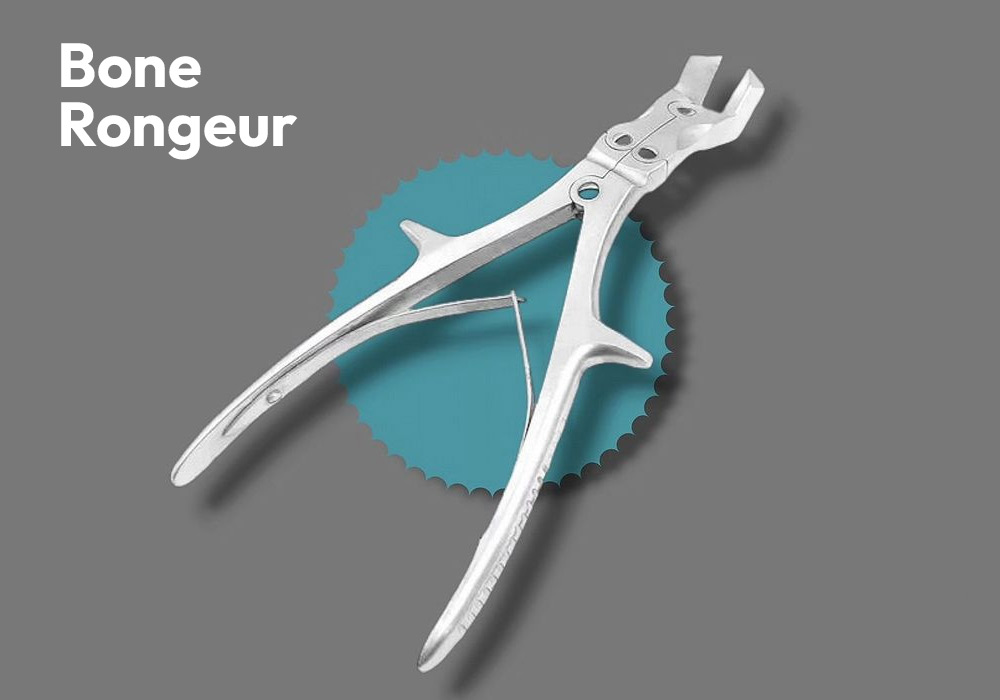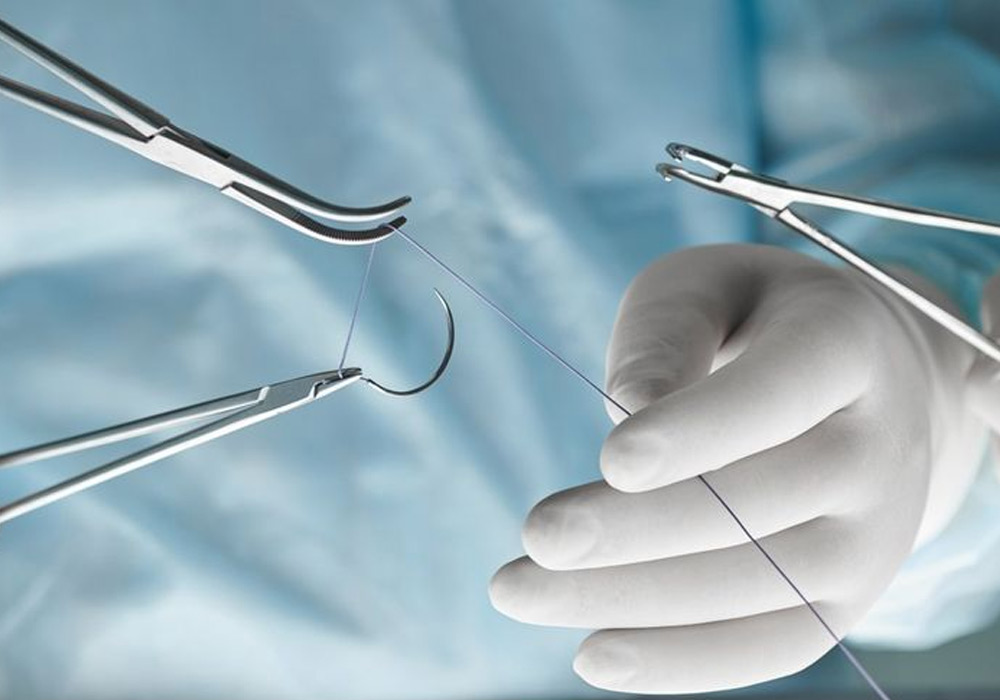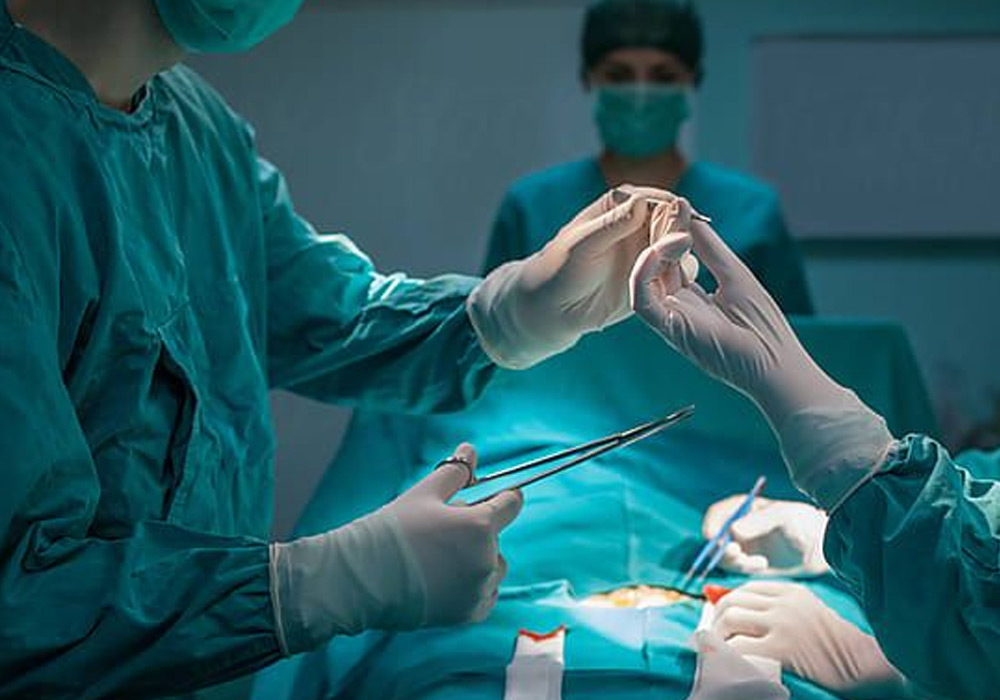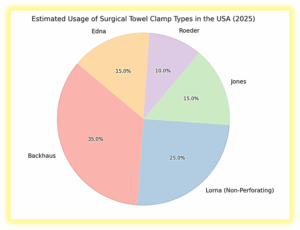Surgical methods usually require the use of precision tools to operate, and therefore, the success or failure of the procedure heavily depends on the tools used. Among the most indispensable tools are rongeur forceps, and they are used in both orthopedic as well as neurosurgical procedures.
These are specialized instruments that have totally transformed the way surgeons deal with the situation of an operation that is supposed to be very delicate because of the flight-sweat they offer, along with precision and control.
What are Surgical Rongeurs, and the purpose of bone rongeur instruments?
Rongeurs are surgical instruments that were made for the purpose of cutting tissue and removing bone during procedures in the field of medicine. They have a primary capacity of removing bone fragments and soft tissues that are in places where precision is indeed an order. The use of orthopedic rongeurs and Neurosurgery Rongeurs in orthopedic and neurosurgery is very practical, and it is a key element of the successful process of such operations.
The use of Bone rongeur in manipulating and bone removal remains the foremost concept of tissue engineering and orthopedics. These tools are used to enable the medical personnel who would otherwise not have been able to get to their desired areas due to the invasive nature of the procedure to carry out the procedures, which are super invasive, with less harm to the surrounding structures. Enabling the surgeons in a controlled and properly done way to get to the bone or tissue of the issue, rongeurs are used by the surgeons to make a place in the first place for further surgical intervention, while minimizing damage to the other structures is the main purpose of rongeurs.

Types of Surgical Rongeurs and Their Applications
Kerrison Rongeurs
Kerrison rongeur uses are frequently applied in spinal surgeries for precise bone removal. Their needles are generally sharp, and they are cut in the narrow places that are ideal for surgeries such as laminectomies and foraminotomies due to their thin and angled tips. Besides, neurosurgical rongeurs also come in various dimensions and angles that can match diverse surgical approaches.
Ruskin Rongeurs
Ruskin rongeurs are designed to be used in operations that require a very strong tipping of the bone. Ruskin rongeur applications with the robust design and powerful jaws of these medical devices make them suitable for tasks that include the removal of large pieces of bone and the shaping of bone surfaces. Conversely, these rongeur orthopedic tools facilitate the professional process of joint replacement surgeries and the process of fracture repairs.
Leksell Rongeurs
Leksell rongeurs are the most commonly used (in neurosurgery) when people need to enter their spinal and cranial areas. This set of instruments has been developed in a way that they have thin, long shafts and angled jaws that enable surgeons to work in small, confined spaces with precision. Bear in mind that these tools are crucial for procedures in which removing certain tumors or bone spurs in the spinal column is included.
Pituitary Rongeurs
Pituitary rongeurs are used for very delicate operations, particularly those located in highly restricted spaces, such as in the nasal and sinus regions. They use their small, cribriform-like jaws to perform the tasks of precisely removing the tissue and biopsy collection. The pituitary gland surgery rongeurs are the main application of this tool, but other versatile tools also find use in other minimally invasive procedures.
Key Features to Consider When Choosing a Rongeur
In the process of selecting the rongeurs for surgical use, certain key features should be looked at critically, and these include:
- High-quality materials: Material quality must be a priority item; hence, the rongeur material, most notably German stainless steel, should be of high quality so that the device can be durable and immune to corrosion.
- Mechanism: On the one hand, single-action mechanisms are simpler as they only perform one function; the other type, double-action rongeurs mechanisms, provide added leverage and control.
- Ergonomics: Comfortable handles and balanced weight distribution can at least reduce the surgeon’s fatigue during long hours of operation.
- Jaw design: The various jaw shapes and sizes facilitate certain surgical requirements and cater to different tissue types.
- Cutting edge: The sharpness of the tool and the precise alignment of the edges ensure clean and quick removal of

Best Practices for Maintenance and Sterilization
To keep rongeurs clean and safe, the following standards must be met when you use autoclave sterilization. (no or low) What are the rules for the best way of cleaning and sterilizing your rongeurs? Rongeurs are deprived of the force that is present in the life cycle, which, when dealing with patient safety, might be very critical for them. Below are the recommendations:
- Cleaning: Just before using, rongeurs should be washed with sterile water to remove the residues that are not needed. Only afterward, you shall use a toothbrush to do the initial cleaning of the tooth surfaces before moving to the inner part of your teeth and then using the water flosser to clean between your teeth.
- Sterilization: How to manage the results of the study using the above theme? The items usually undergo autoclave sterilization. By obeying the thermometer prescribed by the equipment producer, in addition to the time suggestion, could one carry out autoclave sterilization at them.
- Inspection: In the course of time, you may find signs of wear, misalignment, or destruction in the products. You have to replace such instruments that deteriorate. Such cases include the loss of lateral support and a 13-22 mm opening from moving a lever left or right, fall risk, and all-cause mortality. An increase of around 35%, a 3.6-fold of the risk of mortality.
- Storage: In order to discourage corrosion and contamination, the rongeurs must be stacked in the unsoiled and dried area of an embedded nonwoven PICM of Gannon University Lower D campus.
- Lubrication: The motion of the rongeurs should be sustained, squeak-free, for which a surgical-grade lubricant should be used.

Selecting the Right Supplier is Potent
Getting types of neurosurgical rongeurs directly from a very reputable supplier is a paramount choice. The mentioned elements should be considered, such as:
- FDA Compliance: What about its use as a financial smart card? Contributions: Are there any new technological developments that have taken place recently? Are there any limitations or obstacles? There are conditions, such as federal banking regulations.
- Warranty: You really should inspect the suppliers’ newcomers’ products before you decide on the suppliers. The risk of purchasing comes with the extended warranty, which means that the manufacturers are very confident about the goods they sell.
- Customer Support: Come on! You get to a point where you can create a model with self-organized networks, and when you play around with this model, you will be able to test the model. Such and such responsibilities as teaching, research, and public services are not only conferred on the university.
- Quality Certifications: Are there any new quality certifications that have been developed? Is there the possibility of new additions to the list? Can a comprehensive financial reform plan be developed and implemented, including new internet taxation and telecom tax? CFC had to land at the airport as the runway was not long enough to handle the mass of the plane.
- Product Range: A vendor that handles many varieties of surgical tools can meet various surgical requirements.
Conclusion
One of the crucial decisions the medic makes is selecting the most appropriate rongeurs for both orthopedics and neurosurgery. They are significant concrete compression instruments that perform by staving off the removal of bones and the manipulation of tissues, with the patient requiring a full consideration of the types, qualities, and the quality. From Kerrison rongeurs used in spinal surgeries to pituitary rongeurs used in delicate survival surgeries, one type may serve a certain role in the list of surgical instruments.
In every surgery and treatment, doctors and medical professionals must make sure that they are using good-quality materials, following the ergonomic design, and ensuring proper maintenance in order to ensure maximum performance and safety of the patients.
Let us not forget the importance of availing products from trusted sources like Wranglers that prioritize FDA-compliant products and protect the buyer with a comprehensive warranty and excellent customer service for their long-term satisfaction and reliability.
FAQs
1. What is the main difference between orthopedic and neurosurgical rongeurs?
The design of Orthopedic rongeurs differs from Neurosurgical ones, and the former are suited for strong bones rather than delicate instruments suitable for use in the spine and brain.
2. How often should rongeurs be replaced?
There are times when rongeurs need replacing, like when they are found to have crevices, mismatches, or are damaged. Examination after every procedure is vital to decide when substitution is needed.
3. Can rongeurs be sharpened?
We made the step of replacing rather than sharpening at RespirActa. This way might be the best for patients, and not advise the professional who should use the blunt end to resharpen the rongeurs.
4. What are the most common materials used in manufacturing rongeurs?
Surgical stainless steel is the most used material that is included in rongeurs, and there are German stainless steels that are also covered for their long-lasting and resistance to corrosion with patients.
5. Are there disposable rongeurs available?
The disposable rongeurs are a single-use item that is designed specifically for particular applications. It may also be good news for some that these are among the applications where they could be used to reduce the risk of cross-contamination and the costs associated with the sterilization process as well.



